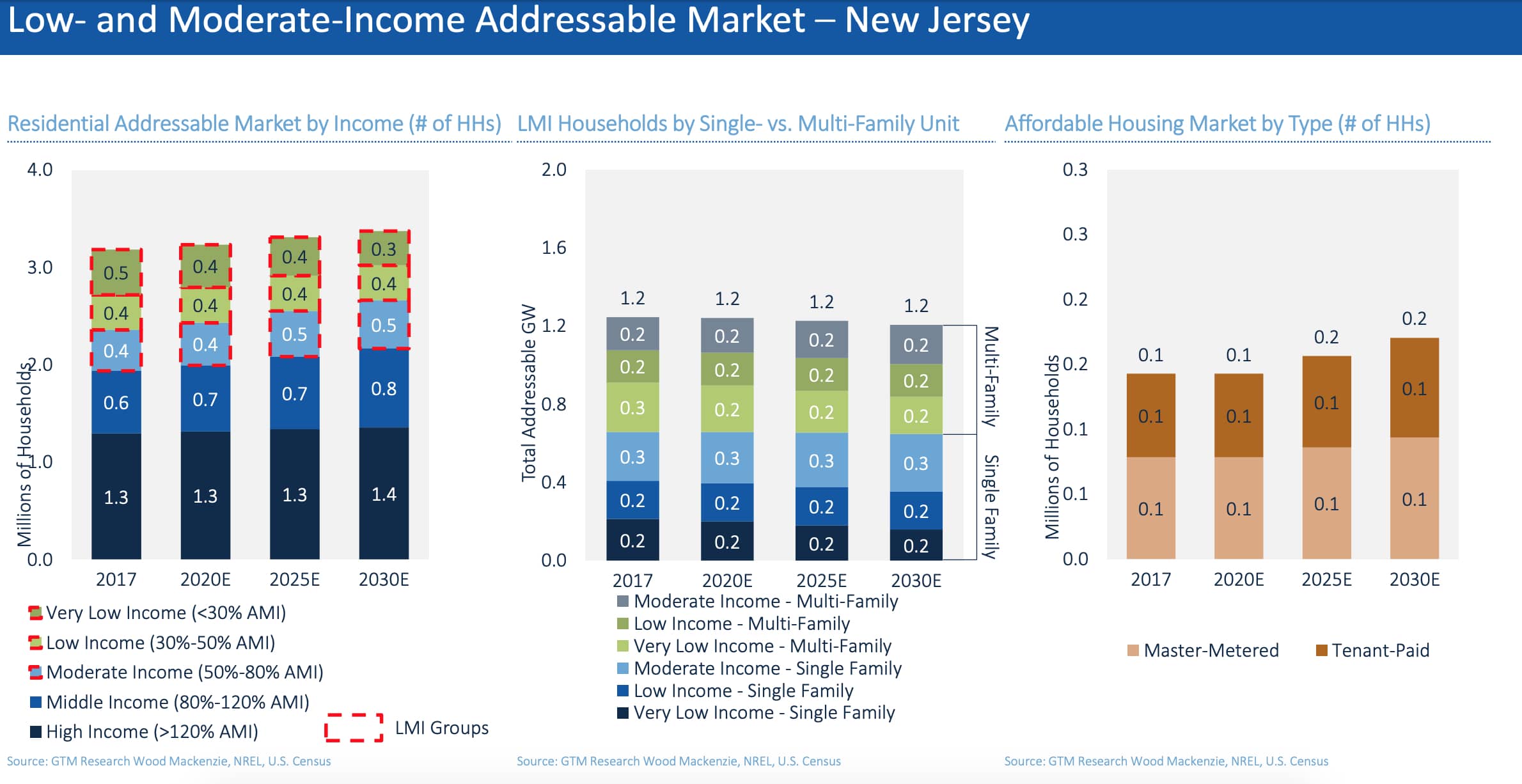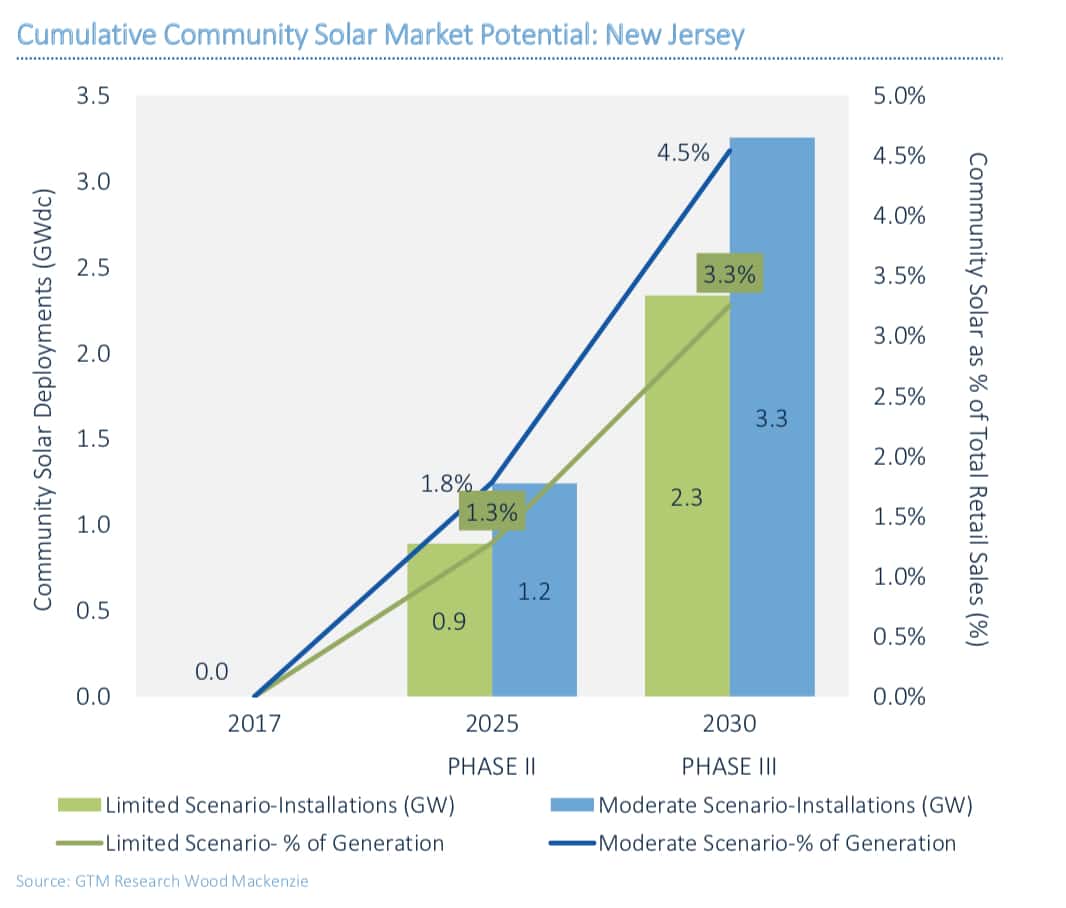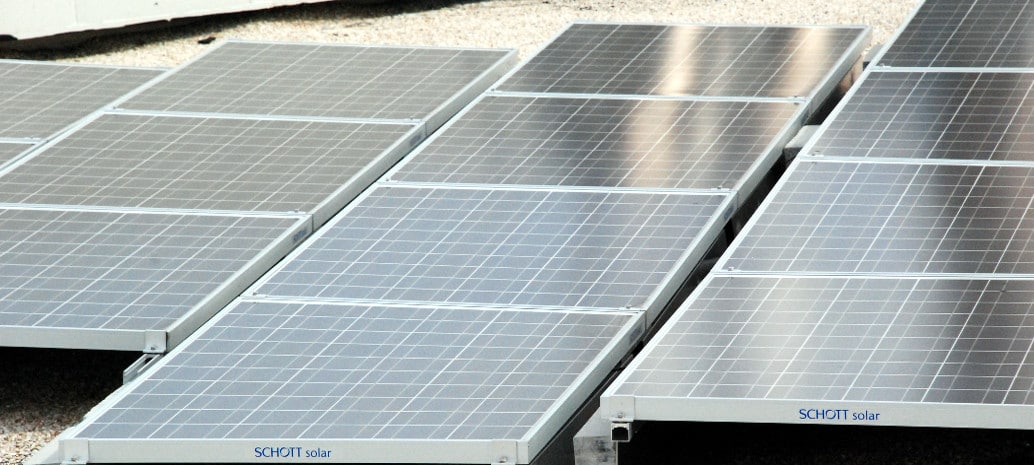New Jersey has its first community solar pilot program and it’s sure to make waves. The program approved last week has an anticipated capacity of 225 MW, enough to power up to 30,000 homes and other customers.
As ambitious as this project may seem, some see it as the first step in turning the Garden State into the Solar Garden State. Vote Solar and Wood Mackenzie Power & Renewables (formerly GTM Research) now have identified a total of 3.5 million state residents that community solar has the potential to serve.
The project aims to serve the 75% of consumers who either can’t afford a rooftop installation of their own or who live in a residence that is unsuitable for a PV system through a cutout that allocates 40% of the overall capacity to serve these customers. Considering the current goal is to bring online 75 MW of solar the first year and a minimum of 75 MW in the two following years through the pilot, that means 30 MW annually and 90 MW total for low-income residents.

The project will also allow New Jersey to make strides towards the state’s renewable portfolio standard (RPS) target of 50% Class I renewable energy by 2030. This RPS initiative also features a maximum “cut-out” of 5.1% of energy coming from solar by 2021, with that target being reduced to the permanent standard of 1.1% by 2030. However, ambition is not just limited to the growth of community solar in the state, but to the RPS initiative as well, as Governor Phil Murphy has stated a goal of 100% clean energy by 2050.
As Wood Mackenzie outlines, community solar has the potential to create exponential growth in New Jersey’s electric market. In that same report, the company showed a scenario where New Jersey could add 2.3-3.3 GW of community solar by 2030, which would represent over 4.5% of total electricity generation in the state.

The program was designed for flexibility, allowing for projects built on variety of sites like brownfields, warehouses, rooftops, and farms. The program will open to developers in March, and local planning boards should start receiving project proposals in the coming year.
This content is protected by copyright and may not be reused. If you want to cooperate with us and would like to reuse some of our content, please contact: editors@pv-magazine.com.









By submitting this form you agree to pv magazine using your data for the purposes of publishing your comment.
Your personal data will only be disclosed or otherwise transmitted to third parties for the purposes of spam filtering or if this is necessary for technical maintenance of the website. Any other transfer to third parties will not take place unless this is justified on the basis of applicable data protection regulations or if pv magazine is legally obliged to do so.
You may revoke this consent at any time with effect for the future, in which case your personal data will be deleted immediately. Otherwise, your data will be deleted if pv magazine has processed your request or the purpose of data storage is fulfilled.
Further information on data privacy can be found in our Data Protection Policy.